Babeville: Buffalo’s Angelic Concert Hall
When Buffalo’s Asbury Delaware Methodist Church first opened its doors in 1874, the Gothic Revival-style expanse wasn’t simply a collection of pews and an altar. Encased in Medina sandstone and with its spire high above Delaware Avenue, it was slated to serve as the epicenter of its congregation’s community.
Social interaction. After-school activities. Devoted worship. All this and more took place inside its breathtaking confines not just as a function of its purpose, but to inject love, happiness, and spiritual fulfillment into the lives of its visitors.
Nearly 150 years later, it’s serving the same purpose—albeit in a much different capacity.
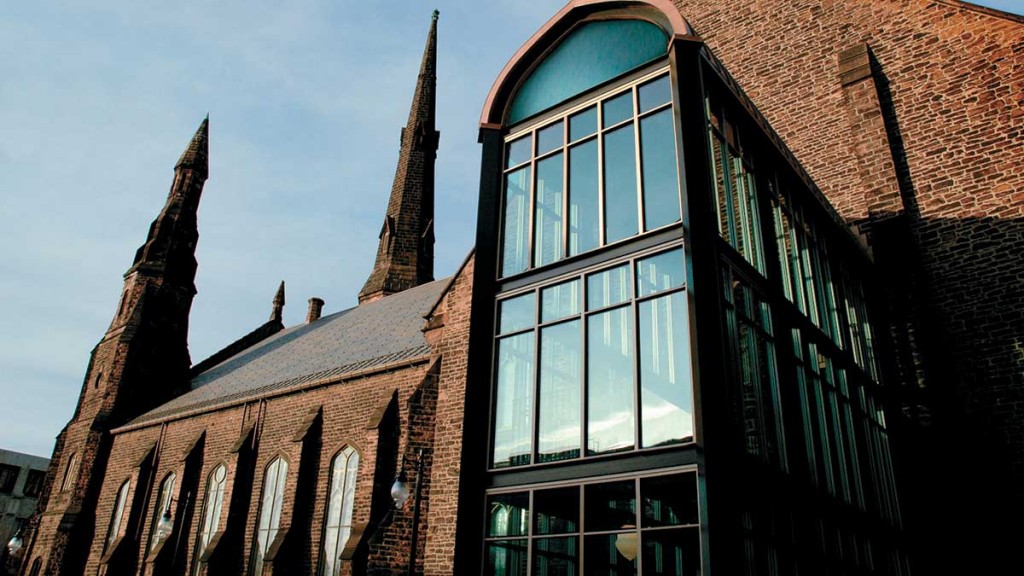
The former house of holy is now Babeville, home to downtown Buffalo’s most eclectic arts campus, and a destination for touring musicians of all genres. Featuring its 1,200-capacity Asbury Hall music venue, the intimate Ninth Ward, Hallwalls Contemporary Arts Center, and operating space for a handful of arts-focused non-profits, the longtime church now serves up salvation not by scripture, but via bass chords, brush strokes and string quartets. It’s a veritable hub of creative percolation against an angelic backdrop, one that stands alone among rock clubs and concert halls across the Queen City.
But to truly appreciate the venue’s significance, it’s important to understand how close it came to not existing at all.
Like many urban congregations, the Asbury Delaware Methodist Church experienced a dramatic decline in parishioners which ultimately led to its demise in the late 80s. Worn down by years of neglect, the structure—with loose stone falling from its spire—was saved from emergency demolition in 1996 by pressure from internationally renowned (and Buffalo-born) recording artist Ani DiFranco and her manager, Scot Fisher. According to Fisher, the decision to rescue the building was part passion play, and part practical.
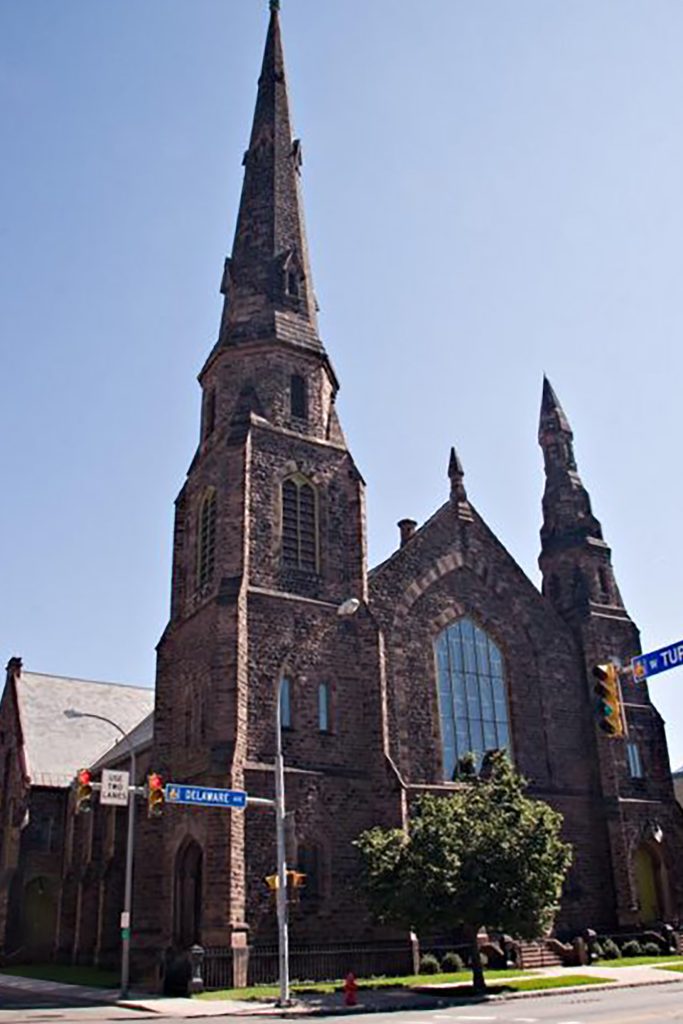
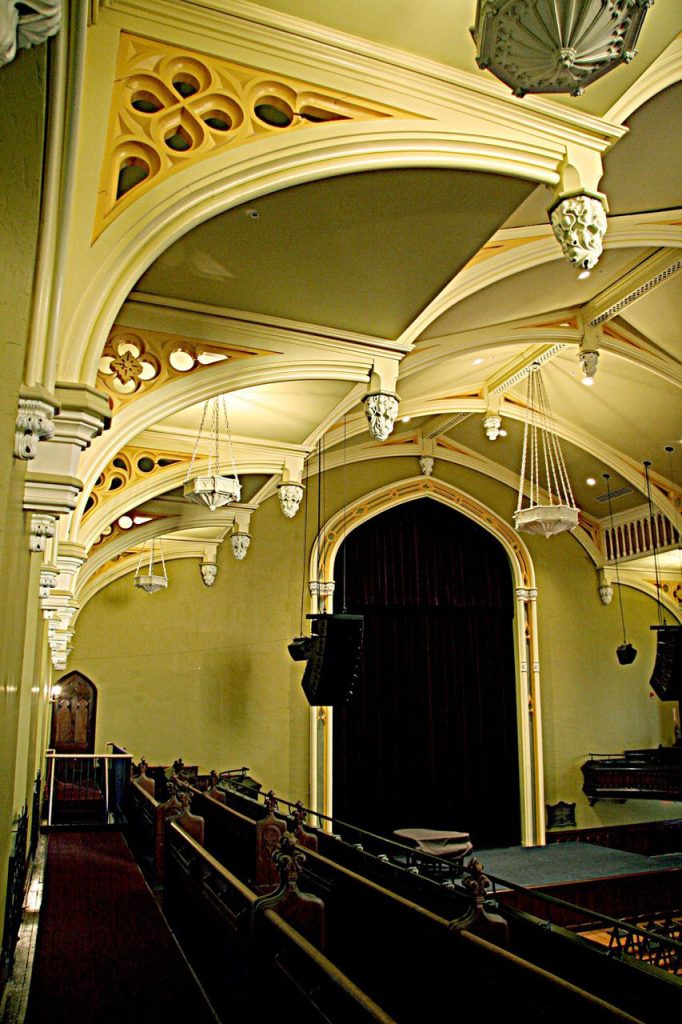
“I got involved because I didn’t want to see this landmark structure get torn down,” said Fisher, now sole owner of the building. “And I thought, what can I do to help?”
Aside from intervening financially to officially purchase the dilapidated John Selkirk masterwork from the City of Buffalo in 2000, DiFranco’s and Fisher’s central idea was to stabilize the building enough to house offices of the duo’s record label, Righteous Babe Records. After that, there wasn’t much of a long-term vision for the site, aside from utilizing the eventual Asbury Hall portion for live performances. This seemed simple enough—but it was merely the beginning of a developmental journey that would last more than 10 years, require more than $10 million in private and public funding, and require Fisher to greatly diversify his decades of music business acumen.
“When I was going through it, I realized that me being in the music business helped with this endeavor as much as being a dentist in the medical business would enable one to perform heart surgery,” says Fisher, laughing in recollection. “There’s different roles [in these businesses], but over the years, I’ve learned how to perform a bit of heart surgery along the way.”
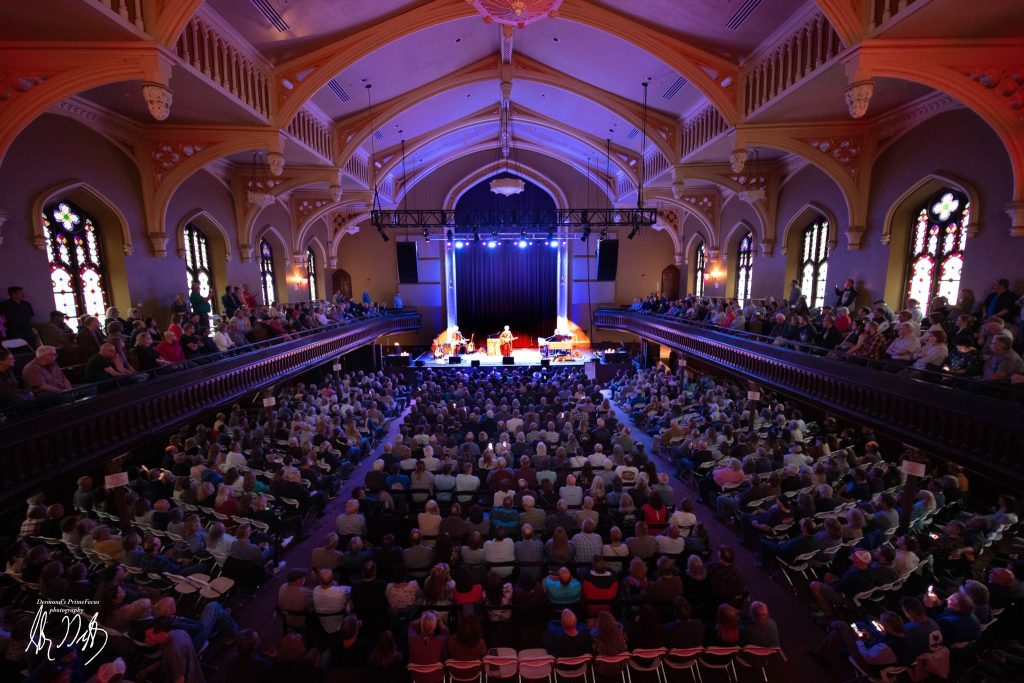
This surgical prowess starts with Fisher and his team painstakingly cultivating what has become the one-of-a-kind Buffalo venue, Asbury Hall. Set in the original Methodist congregation space and encircled by a U-shaped balcony, the open-floor room boasts 45-foot ceilings and arched trusses hovering over a stage that, since opening with a two-night DiFranco christening in 2007, has hosted the likes of Kurt Vile, St. Vincent, and Vampire Weekend. Over more than a decade, it’s become a place that a litany of touring musicians have asked to play—and not just because they want to feel the spiritual embrace and communion the former church is now known to provide. It’s because, since those first DiFranco shows, the Babeville staff has gone to great pains to turn a house of God into a Heaven of sonic splendor, with sound as pristine as the hall’s intricate woodwork and stained-glass windows.
“You can spend more than $10 million fixing up a building, but if it doesn’t sound good, you’ve wasted your money,” says Fisher. “[People] come to the listen to the music, not to look at the windows or fancy paintings. That’s when we determined our weakest link in the chain was the sound in the room.”
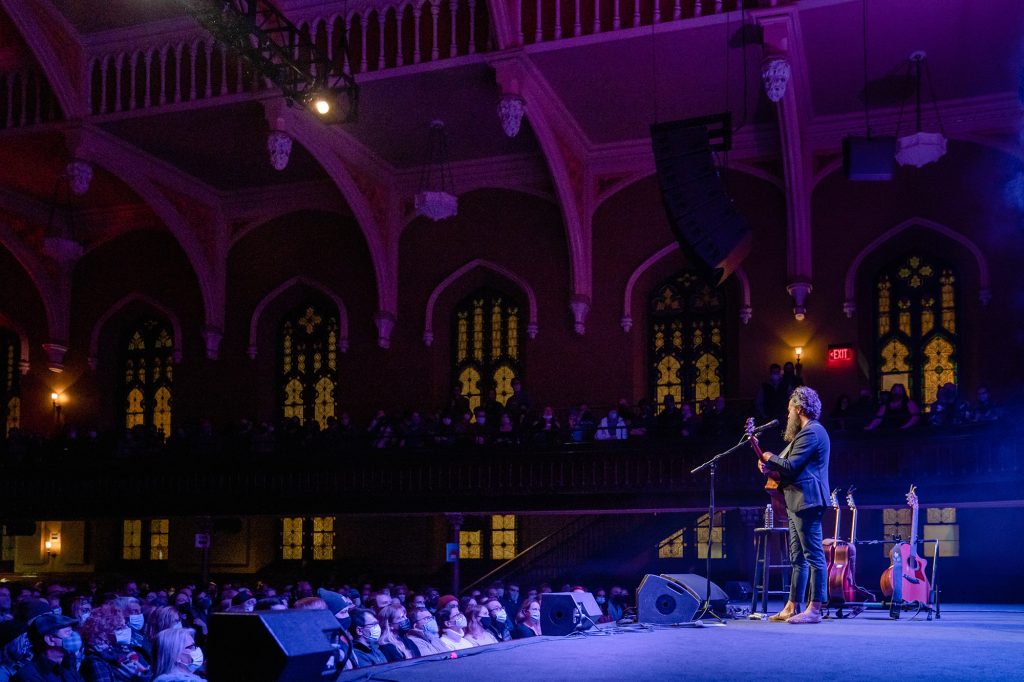
With the help of an array of accomplished sound techs, acousticians, and international amplification experts from as close as Massachusetts and as far away as France, Fisher’s team took measures—including directional speaker installation, inventive sound dampening and more—to make Asbury Hall’s amplification match the beauty of its interior ambiance.
But as much of an artist and fan destination Asbury Hall has become, it’s just one element of the Babeville campus.
Downstairs, there’s the Ninth Ward, a stone-encased, 150-capacity performance space nestled in the basement of the original Methodist structure. Named in honor of the New Orleans community most dramatically impacted by Hurricane Katrina (as well as the original Buffalo voting ward the venue borders), the venue was inspired by the basement bar beneath New York City’s famed Bowery Ballroom, and since opening, has been given a similar sound audit to its upstairs occupant—albeit to accommodate a much more intimate space.
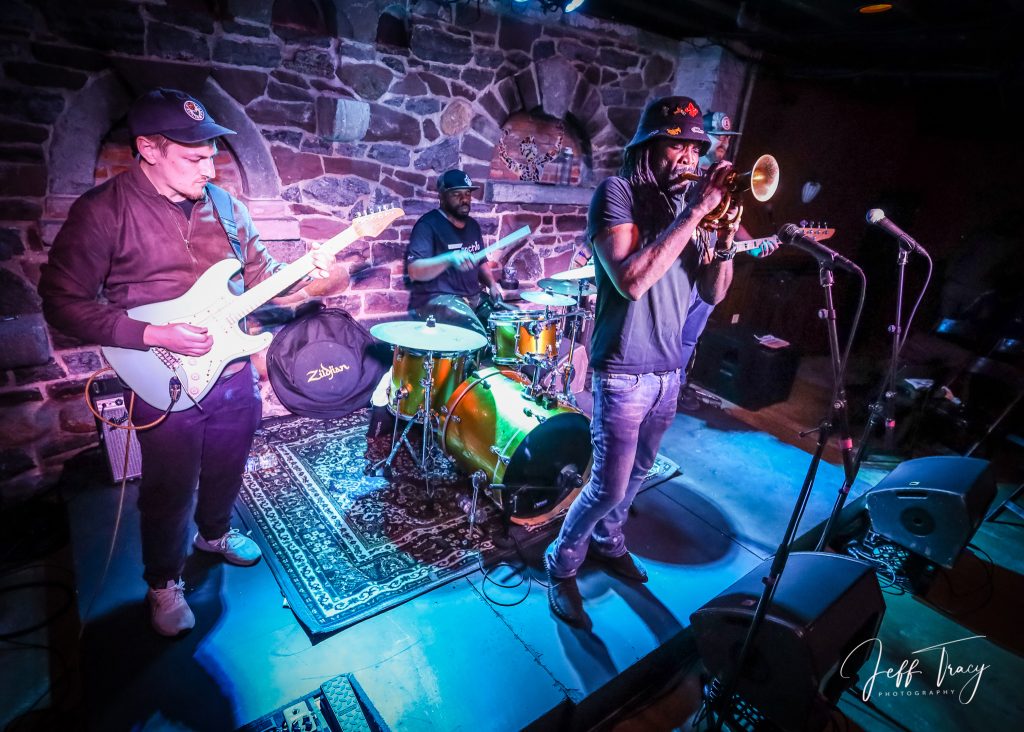
It’s also served as a stepping stone to acoustic and electric bands eventually advancing to the Asbury Hall space, with popular acts like the Milk Carton Kids and Watchhouse (formerly Mandolin Orange) playing to small crowds in the Ward before packing the house upstairs on subsequent tours.
This affiliation has solidified the location as a venue always percolating with intriguing musical performance—and these possibilities are augmented by artistic offerings of other campus occupants, starting with Hallwalls. Found in 1974 and a resident at Babeville since 2006, the center for contemporary art boasts exhibition galleries and its 80-seat media arts screening and performance facility on site. This provides programming that’s complementary to the multi-genre shows of its fellow building occupants, but also feeds into the collaborative function that drives the campus forward.
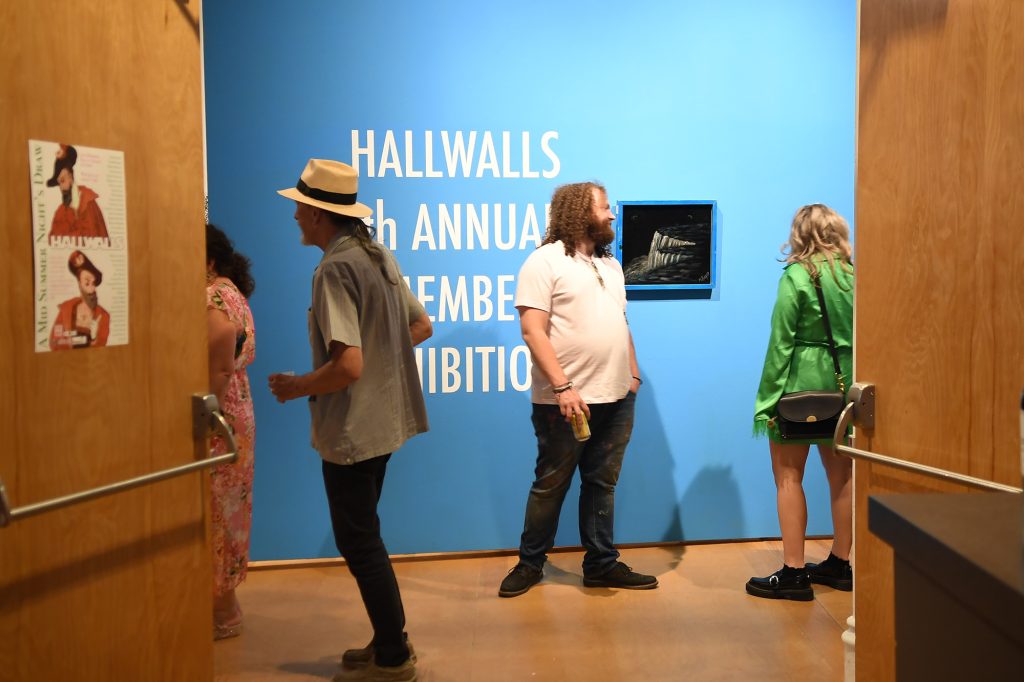
The Ninth Ward feeds into Asbury Hall, which raises the profile of Hallwalls. Righteous Babe Records moved out of the building seven years ago, which opened 4,000 sq. feet of office space now occupied by music-driven nonprofits like the Buffalo Chamber Players, Buffalo Stringworks, and the Buffalo Philharmonic Chorus. Together, all has generated an artistic synergy that’s ignited a forthcoming name change for the campus. According to Fisher, the expanse willeventually retire its Babeville moniker and transition to Asbury Arts Center, which will better reflect what the space has become.
But no matter the name, the building continues to bring people together inside a special destination, all to feel a collective spirit first envisioned in the 19th century.
“This is a place for us to collaborate, something we can do in this space, together,” says Fisher. “The Methodist plan was for the community to have a place to assemble and worship. Now, the space has changed its focus, but it’s still a place for people to assemble, to experience art, and to feel fellowship as a community.”
